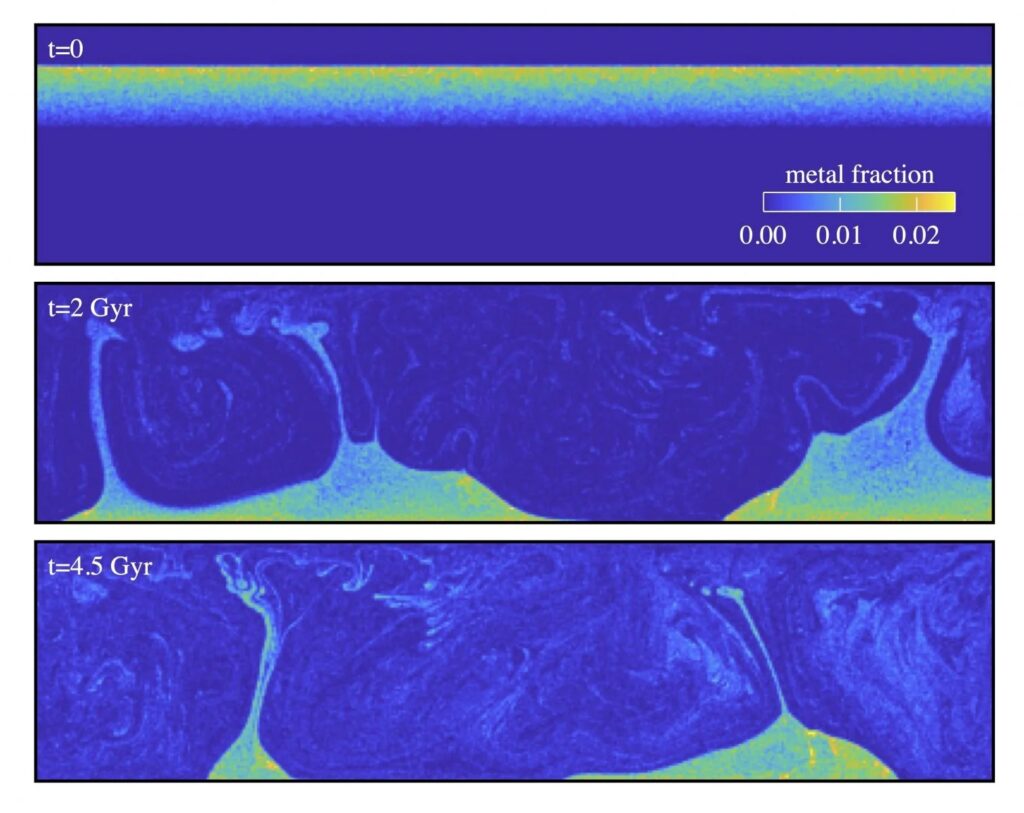Given their strong inclination to be trapped in the Earth’s core, the quantity of highly siderophile elements (HSEs), such as gold and platinum, in the mantle is puzzlingly high. The delivery of HSEs through the bombardment of remnant planetesimals has long been assumed to account for this issue.
Researchers at Yale and the Southwest Research Institute (SwRI) believe they have discovered some important new details concerning the history of gold.
A half-melted section of Earth’s mantle is where the story begins, and it continues there until precious metals eventually find themselves far closer to the planet’s surface than scientists would have thought.
Their novel hypothesis offers potential solutions to open-ended concerns about how gold, platinum, and other precious metals ended up in shallow pockets inside the Earth’s mantle instead of the planet’s core. More generally, the new idea provides new insights into the emergence of worlds throughout the cosmos.
Our research is an excellent example of making an unexpected discovery after re-examining conventional wisdom.
According to recent studies by scientists worldwide, the early proto-Earth collided with large, moon-sized bodies in space billions of years ago, leaving behind deposits of materials folded into what is now the Earth. As a result, precious metals like gold and platinum arrived on Earth.
But that absorption process has remained something of a mystery. They shouldn’t have gathered at or close to the Earth’s surface, according to this theory. Still, they did.
Korenaga said, “Working with Simone, an expert on impact dynamics, I was able to come up with a novel solution to this conundrum.”
The new theory centers around a thin, “transient” region of the mantle, where the shallow part of the mantle melts and the deeper part remains solid. Scientists found that this region has peculiar dynamic properties that can efficiently trap falling metallic components and slowly deliver them to the rest of the mantle.

According to their theory, this delivery is still going on, and the leftovers of the transient zone can be seen as well-known geophysical anomalies called “large low-shear-velocity provinces” in the deep mantle.
This theory is backed up by the fact that this transient region almost always forms when a big impactor hits the early Earth.
According to the researchers, the new explanation sheds light on previously puzzling aspects of Earth’s geochemical and geophysical evolution while emphasizing the wide range of time scales involved in Earth’s origin.
Jun Korenaga, a professor of Earth and planetary sciences at Yale’s Faculty of Arts and Sciences, said, “One of the remarkable things we found was that the dynamics of the transient mantle region take place in a concise amount of time — about a day — yet its influence on subsequent Earth evolution has lasted a few billion years.”
Journal Reference:
- Jun Korenaga and Simon Marchi. Vestiges of impact-driven three-phase mixing in the chemistry and structure of Earth’s mantle. PNAS. DOI: 10.1073/pnas.2309181120
